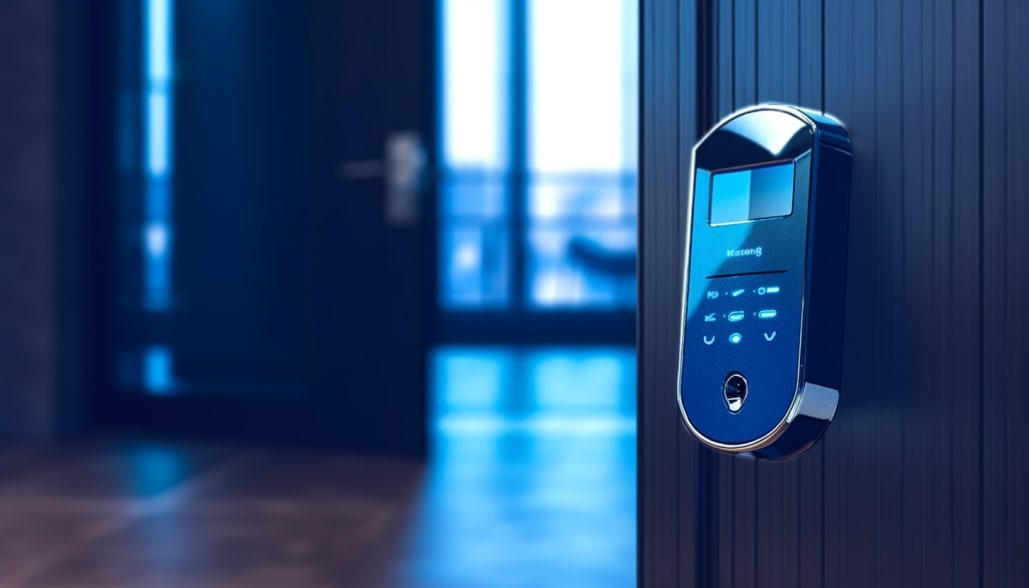Multi-residential buildings, such as apartment complexes and condominiums, require a robust and effective access control system to ensure the security and convenience of residents. Choosing the right access control system can be a daunting task, considering the variety of systems available and the unique requirements of each building. In this article, we will explore the different types of access control systems, their features, security considerations, budget factors, implementation process, and maintenance strategies. By understanding the ins and outs of access control systems, property managers and building owners can make informed decisions and create a secure living environment for their residents.
Introduction to Access Control Systems for Multi-Residential Buildings
An access control system is essential for maintaining the security and order of multi-residential buildings. It helps prevent unauthorized access, protect residents’ privacy, and manage visitor access. When selecting an access control system, property managers and building owners must consider various factors, such as the building’s size, number of residents, and specific security requirements.
Importance of Access Control in Multi-Residential Buildings
Access control plays a crucial role in maintaining the safety and privacy of residents. It helps prevent unauthorized access by restricting entry to certain areas of the building, such as entrances, parking garages, and common areas. A well-designed access control system can also deter criminal activity, such as burglary and vandalism, by making it more difficult for intruders to enter the building unnoticed. Additionally, access control systems can help property managers monitor visitor access and track entry logs, providing valuable data for security audits and incident investigations.
Factors to Consider when Choosing an Access Control System
There are several factors to consider when selecting the right access control system for a multi-residential building. Some of the key factors include:
- Ease of use: The system should be user-friendly for both residents and property managers, with minimal learning curve and easy-to-understand interfaces.
- Scalability: The system should be able to accommodate the building’s growth and changing needs, such as adding new units or integrating with other security systems.
- Customizability: The access control system should be adaptable to the unique requirements of the building, such as specific access levels for different resident groups or time-based access restrictions.
- Reliability: The system should have a proven track record of reliability, with minimal downtime and robust security features to protect against hacking or other security breaches.
- Cost: The cost of the system, including installation, maintenance, and upgrades, should align with the building’s budget and long-term financial plan.
Types of Access Control Systems
There are several types of access control systems available for multi-residential buildings, each with its own advantages and disadvantages. Understanding the differences between these systems can help property managers and building owners make informed decisions when selecting the best access control system for their building.
| Type of Access Control System | Description |
| Biometric Access Control | Uses unique biological characteristics, such as facial recognition, fingerprint, retina, and palm recognition to authenticate users |
| Smart Card Access Control | Uses a card with an embedded microchip to store and transmit data to authenticate users |
| Key Fob Access Control | Uses a small electronic device that emits a signal to unlock a door or gate when held near a reader |
| PIN Access Control | Uses a secret code entered on a keypad to authenticate users |
| Physical Access Control | Uses an electronic system that exists in lieu of traditional keys. Authorized users swipe an access card to gain entrance into certain areas of the building |
Traditional Key-Based Systems
Traditional key-based systems use physical keys or key cards to grant access to residents. While these systems are generally more affordable and straightforward to implement, they have several drawbacks. For example, lost or stolen keys can pose a significant security risk, as they can be easily duplicated or used by unauthorized individuals. Additionally, key-based systems do not offer advanced features, such as remote access management or integration with other building systems.
Electronic Card Access Systems
Electronic card access systems use electronic key cards, such as magnetic stripe cards or RFID cards, to grant access to residents. These systems offer a higher level of security than traditional key-based systems, as electronic cards can be easily deactivated if lost or stolen. Electronic card access systems also provide additional features, such as entry log tracking and integration with other building systems, such as elevator controls and parking management. However, electronic card access systems can be more expensive to implement and maintain than traditional key-based systems.
Biometric Access Control Systems
Biometric access control systems use unique physiological features, such as fingerprints, facial recognition, or iris scans, to grant access to residents. These systems offer the highest level of security, as they are virtually impossible to duplicate or bypass. In addition, biometric access control systems can provide advanced features, such as time-based access restrictions and integration with other building systems. However, biometric systems can be expensive to implement and maintain, and some residents may have privacy concerns regarding the use of their biometric data.
Smartphone-Based Access Control Systems
Smartphone-based access control systems use mobile apps and Bluetooth or Wi-Fi technology to grant access to residents. These systems offer a high level of convenience, as residents can use their smartphones to unlock doors, manage visitor access, and receive notifications about building events. Smartphone-based systems can also integrate with other smart building technologies, such as lighting and HVAC controls. However, these systems may require a strong and reliable internet connection, and some residents may have concerns about the security of their smartphones or the potential for hacking.
Implementing and Maintaining an Access Control System
Once the appropriate access control system has been selected, property managers and building owners must plan for the installation, maintenance, and ongoing management of the system. A well-implemented and maintained access control system can provide long-lasting security and convenience for residents.
Installation Process and Considerations
The installation process for an access control system can vary depending on the type of system and the building’s specific requirements. Property managers and building owners should work closely with the system provider to plan the installation process, including determining the optimal locations for access points, integrating with other building systems, and training staff on system operation.
Ongoing Maintenance and Management
Regular maintenance and management are essential for ensuring the long-term effectiveness of an access control system. Property managers and building owners should establish a schedule for system updates, hardware inspections, and software maintenance to minimize downtime and ensure the system remains up-to-date and secure.
Addressing Resident Concerns and Feedback
Open communication with residents is crucial for the successful implementation of an access control system. Property managers and building owners should address any concerns or feedback from residents, such as privacy issues or difficulties using the system, to ensure resident satisfaction and maintain a secure living environment.
In Conclusion: Finding the Right Access Control System for Your Building
Selecting and implementing the right access control system for a multi-residential building requires careful planning, consideration of various factors, and ongoing maintenance and management. By understanding the different types of access control systems and their advantages and disadvantages, property managers and building owners can create a secure and convenient living environment for their residents.
Frequently Asked Questions
How do I determine which access control system is best for my building?
Choosing the best access control system for a building requires careful consideration of several factors. Here are some tips to help determine which access control system is best for a building:
- Identify the specific needs: Determine the specific needs of the building, such as the number of entry points, the number of residents or tenants, and the level of security required
- Consider the type of building: Different types of buildings may require different types of access control systems. For example, multi-tenant residential buildings may require access control systems that can monitor who enters and exits the building to prevent illegal subleasing and unsanctioned residents
- Evaluate the different types of access control systems: There are different types of access control systems available, such as biometric, smart card, key fob, PIN, and physical access control systems. Evaluate the pros and cons of each system and choose the one that best meets the specific needs of the building
- Determine the budget: Access control systems can vary in cost, so it is important to determine the budget for the system and choose the one that fits within the budget
- Hire a professional: It is recommended to hire a professional commercial security integrator for the installation process. A licensed security integrator will ensure that the installation is compliant with safety and security industry standards
By considering these factors, building owners and operators can determine which access control system is best for their building and ensure a successful installation process.
Can I integrate my access control system with other building systems, such as elevator controls or parking management?
Yes, it is possible to integrate an access control system with other building systems, such as elevator controls or parking management. Integrating access control with other systems can boost the security of a building by allowing different systems to work together, with one action triggering another. For example, integrating access control with elevator controls can restrict access to certain floors based on the user’s clearance level, while integrating access control with parking management can allow only authorized vehicles to enter the parking lot. The specific integration options will depend on the type of access control system and the other building systems in place. It is recommended to consult with a professional commercial security integrator to determine the best integration options for a specific building.
What are the key features to look for when selecting an access control system?
When selecting an access control system, there are several key features to consider. Here are some of the most important features to look for:
- User-friendly interface: The system should be easy to use and navigate for both administrators and users
- Scalability: The system should be able to grow and adapt to the changing needs of the building or organization
- Integration capabilities: The system should be able to integrate with other building systems, such as elevator controls or parking management, to improve overall security
- Customization: The system should be customizable to meet the specific needs of the building or organization
- Remote access: The system should allow for remote access and management, allowing administrators to monitor and manage the system from anywhere
- Audit trail: The system should have an audit trail feature that records all access attempts and activities for future reference
- Multi-factor authentication: The system should have multi-factor authentication capabilities, such as biometric or smart card authentication, to ensure the highest level of security
- Compatibility: The system should be compatible with the existing hardware and software in the building or organization
- Reliability: The system should be reliable and have a backup power source in case of power outages
- Support: The system should come with reliable technical support and maintenance services
By considering these features, building owners and operators can select an access control system that meets the specific needs of their building or organization and provides the highest level of security.
How can I address resident privacy concerns related to biometric access control systems?
Resident privacy concerns related to biometric access control systems can be addressed by implementing certain measures. Firstly, it is important to inform residents about the purpose of the biometric system and how their data will be used and protected. This can be done through clear and concise communication and providing a privacy policy that outlines the data collection, storage, and usage practices. Secondly, it is recommended to use a system that stores biometric data locally on the device rather than in a central database to minimize the risk of data breaches. Additionally, implementing strong encryption and access controls can further protect the biometric data. It is also important to provide residents with the option to opt-out of using the biometric system and provide alternative access methods. Finally, regular security audits and updates can ensure that the system remains secure and up-to-date with the latest privacy regulations. By implementing these measures, building owners and operators can address resident privacy concerns related to biometric access control systems and ensure that the system is used in a responsible and secure manner.
What are some common challenges faced when implementing and maintaining an access control system?
Implementing and maintaining an access control system can present several challenges. One of the most common challenges is ensuring that the system is properly configured and integrated with other building systems, such as CCTV and alarm systems. Another challenge is managing user access and permissions, which can be time-consuming and complex, especially in large organizations. Additionally, ensuring that the system remains up-to-date with the latest security patches and software updates can be challenging, as it requires regular maintenance and monitoring. Another challenge is ensuring that the system is user-friendly and easy to use for both administrators and users. Finally, ensuring that the system is scalable and can adapt to the changing needs of the building or organization can also be a challenge. By addressing these challenges, building owners and operators can ensure that their access control system is effective, efficient, and provides the highest level of security.
Sources
- “Multi-Tenant Residential Buildings and Access Control Security Benefits – Keri Systems.” Keri Systems, 16 Dec. 2021, kerisys.com/resources/multi-tenant-residential/. Accessed 15 May 2023.
- Lauterbach, Chad. “Be Structured Technology Group, Inc.” Be Structured Technology Group, 4 May 2023, bestructured.com/what-are-the-3-types-of-access-control/. Accessed 15 May 2023.
- “Installing Access Control Systems – a Step by Step Guide.” Security101.com, 2022, www.security101.com/sanfrancisco/blog/installing-access-control-systems-a-step-by-step-guide. Accessed 15 May 2023.
- “3 Tips for Selecting the Right Access Control System for Your Facility – Surveillance Secure.” Surveillance Secure, 28 Jan. 2021, surveillancesecure.com/3-tips-for-selecting-the-right-access-control-system-for-your-facility/. Accessed 15 May 2023.
- McGavisk, Taylor. “13 Features to Consider When Selecting an Access Control Solution.” Timedatasecurity.com, 2018, www.timedatasecurity.com/blogs/13-features-to-consider-when-selecting-an-access-control-solution-2021. Accessed 15 May 2023.
- Council, Research, et al. “Cultural, Social, and Legal Considerations.” Nih.gov, National Academies Press (US), 2023, www.ncbi.nlm.nih.gov/books/NBK219893/. Accessed 15 May 2023.
- “5 Challenges Faced in Implementing Access Control for Your Organization – Ark Systems Inc.” Ark Systems Inc, 8 Feb. 2018, www.arksysinc.com/blog/5-challenges-faced-implementing-access-control-organization/. Accessed 15 May 2023.









